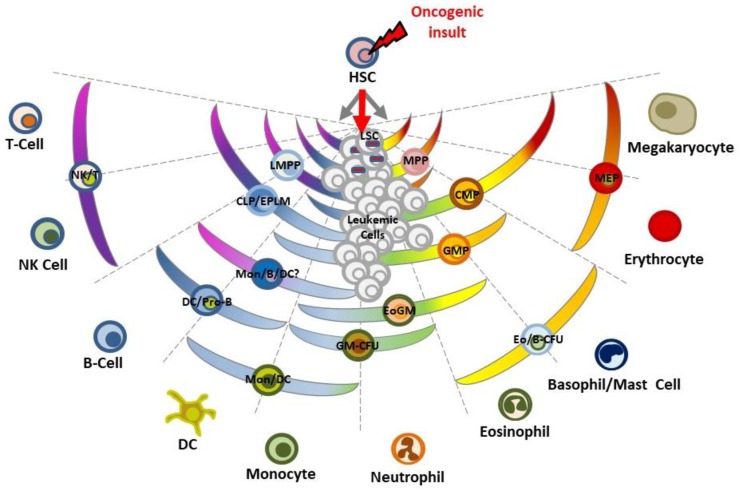Figure 4.
Schematic representation of the emergence of LSCs in the making of a leukemia. A mutation occurs in HSCs leading to the emergence of aberrant pre-leukemic HSCs. These aberrant pre-leukemic HSCs self-renew and expand within the HSC compartment. Pre-leukemic HSCs give rise to a high number of lineage-committed progenitors harboring this identical mutation. This leads to an increased chance of acquiring the additional oncogenic/environmental events, which finally transform the aberrant progenitor cells from pre-leukemic HSCs into the leukemic stem cells (LSCs). Loss of differentiation potentials is essential for the emergence of LSCs. LSCs are reprogrammed by an oncogenic insult to an invariant cell lineage. Hematopoietic stem cell (HSC), Multipotent progenitor cell (MPP), Lymphoid-primed MPP compartment (LMPP), Common myeloid progenitor (CMP), Common lymphoid progenitor (CLP), Early progenitor with lymphoid and myeloid potential (EPLM), Granulocyte-macrophage progenitor (GMP), Monocytes (Mon), Eosinophil-granulocyte-macrophage (EoGM), Granulocyte-macrophage progenitor-colony forming unit (GM-CFU), Dendritic cell (DC), Megakaryocyte-erythroid progenitor (MEP), Natural Killer cell (NK), Eosinophil/Basophil-colony forming unit (Eo/B-CFU).

